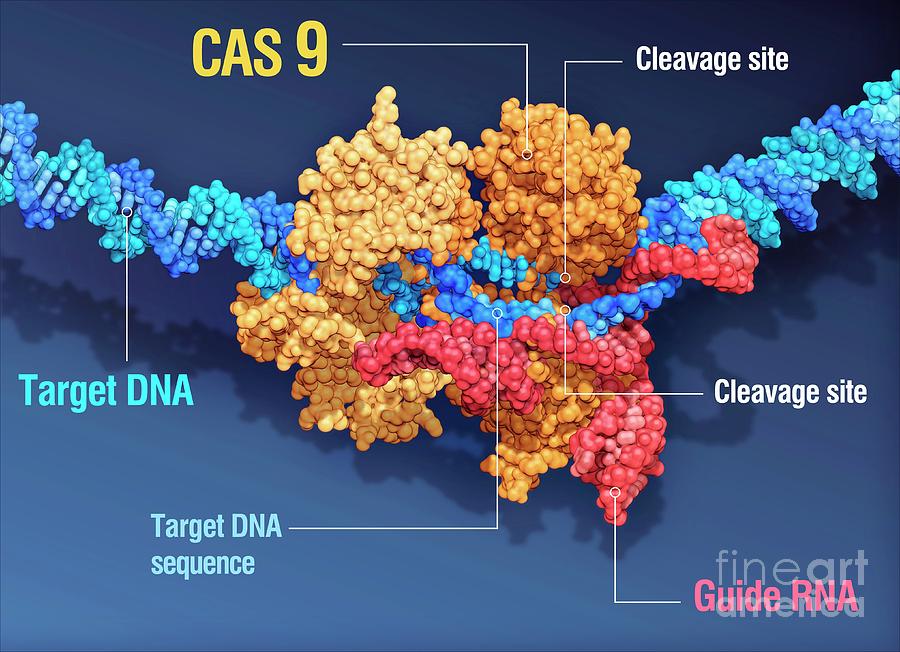Physical Address
304 North Cardinal St.
Dorchester Center, MA 02124
Physical Address
304 North Cardinal St.
Dorchester Center, MA 02124
Being human in this 'brave new world'
Being human in this 'brave new world'

Over the past decade, a technology with the potential to change the trajectory of life sciences and medicine emerged: CRISPR-Cas9. This powerful tool has the potential to rewrite the very fabric of life, our DNA, offering possibilities for profound advancements in genetics and therapeutics.
CRISPR-Cas9 Simplified
CRISPR (Clustered Regularly Interspaced Short Palindromic Repeats) is a naturally occurring defense mechanism found in a wide range of bacteria. As part of this defense mechanism, bacteria use CRISPR-derived RNA and various CRISPR-associated (Cas) proteins, including Cas9, to foil attacks by viruses and other foreign bodies. They do so by chopping up and destroying the DNA of a foreign invader, which helps to protect the bacteria.
The Role and Mechanism of CRISPR-Cas9
So, what exactly does CRISPR-Cas9 do? Essentially, the CRISPR-Cas9 system is a tool that can precisely cut any DNA sequence in any cell. The system consists of two key molecules: the Cas9 enzyme, which acts as a pair of “molecular scissors,” and a guide RNA, which leads the scissors to the specific DNA sequence to be cut.
Once the DNA is cut, the cell’s natural repair machinery kicks in to fix the break. Scientists can use this repair process to introduce changes to one or more genes in the DNA of a cell. It’s like using a computer’s cut and paste tool, but for genes.
Differentiating CRISPR and CRISPR-Cas9
But is there a difference between CRISPR and CRISPR-Cas9? Yes, there is. CRISPR alone refers to the sequences of DNA used to find the spot to be edited. It’s a guide, leading the way to the right part of the genetic code. Cas9, on the other hand, is the enzyme that acts like the ‘molecular scissors’ to cut the DNA at the exact point where changes are needed. When we say CRISPR-Cas9, we are referring to the entire tool, both the guide (CRISPR) and the scissors (Cas9).
CRISPR for Dummies: A Layman’s Explanation
Think of CRISPR as a GPS system that finds the destination (a particular gene), and Cas9 as the vehicle that drives you there. Once it arrives at the right location, Cas9 can alter the gene, like a handyman fixing a faulty piece of machinery.
CRISPR-Cas9 and Human Trials
Has CRISPR been used on humans? Yes, it has. Since the discovery of the CRISPR-Cas9 system, several clinical trials have been initiated around the globe. The technology has been used to treat a range of genetic disorders, including sickle cell disease and Leber’s congenital amaurosis, a form of inherited blindness. In fact, the first CRISPR-based therapy has already entered the market, a treatment for Leber’s congenital amaurosis developed by CRISPR Therapeutics.
The Therapeutic Potential of CRISPR-Cas9
So, what diseases can CRISPR cure? Theoretically, CRISPR has the potential to cure any genetic disease. However, it’s not that simple. The technology is still in its infancy and there are many technical and ethical hurdles to overcome. Nevertheless, promising results have been seen in diseases caused by single-gene mutations, like cystic fibrosis, Huntington’s disease,